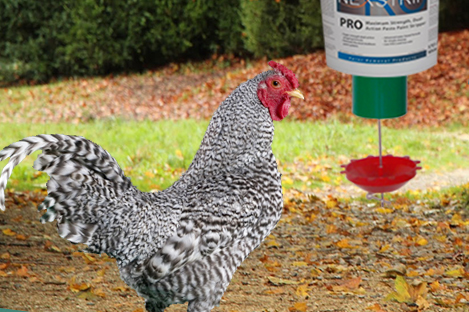
The Dominique is considered America's oldest breed of chicken, also known as Dominicker or Pilgrim Fowl. It is a breed of chicken that originated in the United States during the colonial period. It is believed that this breed descended from chickens brought to New England from southern England during colonial times. It is also assumed that the name Dominique originated from birds that were imported from the French colony of Saint-Domingue. In the days of yore, almost any black and white barred plumage chicken was referred to as a Dominiker. They have rose combs, medium sized bodies, prominent tails, and black and white barred plumage.
Dominiques are considered as dual purpose breed, being valued for their meat as well as for their brown eggs. An adult Dominique weighs 6 to 8 pounds. The black and white barred pattern is called “cuckoo” patterned and hawk-colored. This color serves as a camouflage from predators. It is winter hardy because of its tightly arranged plumage, combined with the low profile of the rose comb. They adapt well to hot and humid climates as well. The males of the breed have an almost “u” shaped back outline while the females have back outlines that slope from head to tail.
Chickens need to receive the correct nutrients, vitamins and minerals in their diet to stay healthy and productive. If feeding corn, the 1-inch or ¾ inch regulator disc can be used. The 1/4-inch regulator disc from PECk-O-MATIC Automatic Chicken Feeder can be used when the feed is millet or mash.
In 1874, the Dominique breed was admitted to the American Poultry Association’s Standard of Perfection. Though considered to be dual purpose, these birds are egg producers with hens historically averaging 230-275 small- to medium-sized brown eggs. An interesting fact about these chickens is that their feathers provided ample material for the pillows and featherbeds of their owners. They even managed to survive during the Great Depression of the 1930’s due to its hardiness and ease of up-keep.